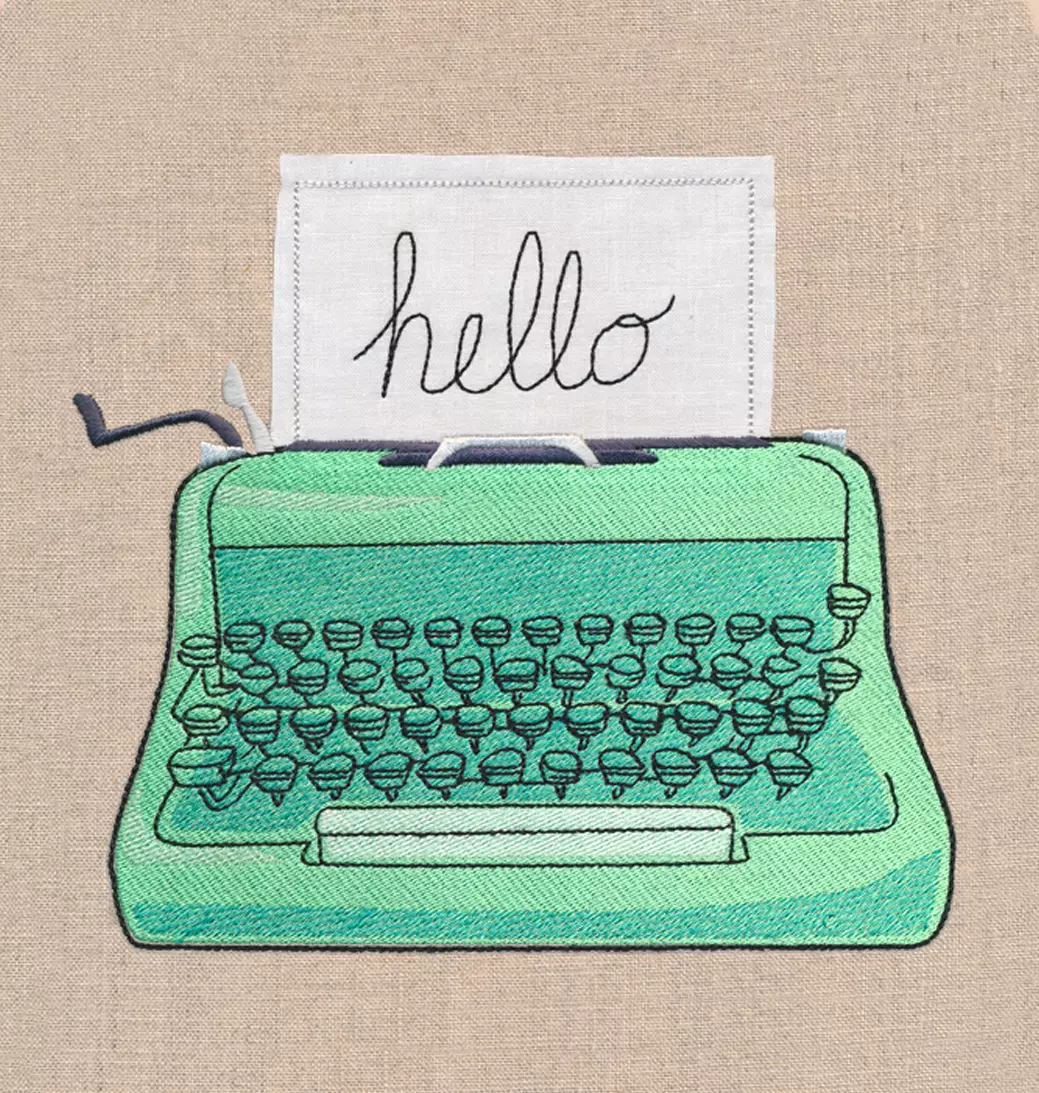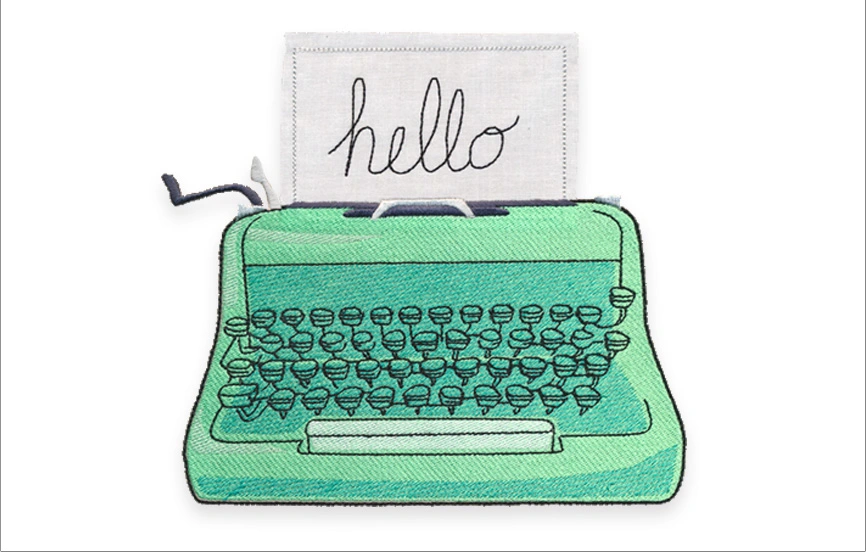I love all the different aspects of my job, from graphic design to tutorials (maybe not so much the file processing part ... but you know) but my real love has always been in drawing. I love that I get to draw every day as part of my career, and sketchbooks have been a part of my arsenal for a long time. Today, I’ll show you a fun way to combine a love of sketching and a love of crafting – by sewing and embroidering a handmade sketchbook!
Supplies
To make your own embroidered sketchbook, you’ll need:
- Cover fabric (I used thick felt to add some structure, but it’s not necessary)
- Lining fabric
- Double sided stiff interfacing
- Drawing paper (No printer paper! Bad! Get some nice artists’ paper)
- Scissors
- Pins
- An iron
- An awesome embroidery design (and I just might know where you can get one)
Designs Used

You can embroider just about anything you want on the cover of your sketchbook, and you can also make your book as large as you want.
I picked our small Celtic roses design, which will make a nice purse size sketchbook, but you can make the sketchbook as large as the design and paper you find to put in it! It all depends on your taste. Just remember, the paper you get will be folded in half in the sketchbook, so it’ll be half the size of the full sheet.
Embroider the design on the right side of your fabric, with enough room on the left for it to be folded in half.

Take a few sheets of your paper and fold them in half. This will give you the basic size and shape of your sketchbook. I took my folded sheets and placed them inside the folded cover.
Cut your cover to match the size of your paper, but leave at least 1/2” inch all the way around your paper for seam allowance, and leave a little bit of room in the fold for when we add our thick paper sections. You can make your sketchbook as thick or thin as you like, depending on how much paper you have and how wide you leave the binding.
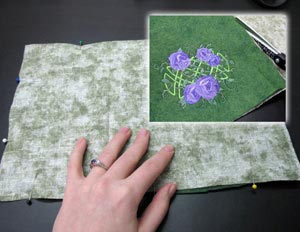
Once you’ve cut your cover to size, place it on top of your lining fabric and cut a rectangle to match.
Pin your cover and your lining right sides together.

Sew a seam around the edges, leaving one end open for turning.
Turn your cover right side out. Now it’s time for your double sided interfacing!
Mine is called Inner-Fuse. I used it before in my felt bowl project and delighted in poking fun at the name. Today shall be no different. Dude, it totally sounds like a superhero name, right?
Anywho...

Cut two pieces of your interfacing just a little bit shorter than your cover. Make the width just short enough so that when they’re both laid out on the cover there’s about an inch gap in between them, like pictured. If you’re making a thicker sketchbook, you’ll want to leave even more room in between.
Slide your interfacing inside your cover, leaving that same size gap between the two pieces. You can pin them in place if you’re worried about them shifting.

Time to iron! Keeping your pieces of interfacing in place, iron over them with a hot iron. This will flatten out your seams and fuse your interfacing to your fabric, giving you a nice stiff cover.
If you’re using synthetic fabric, be sure to use a piece of natural fabric on top of it to prevent it from melting. Melty sketchbooks ain’t cool.

To seal your cover, pin the open raw edges in, and sew a seam all the way around the rectangle. This will finish the cover and secure the edges of any interfacing that didn’t fuse in place.
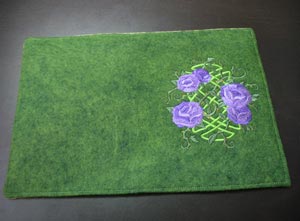
Ta da! Your finished cover. OK, right now it’s mostly just a somewhat stiff rectangle of fabric. But just wait... we’re going to make our paper pages now!
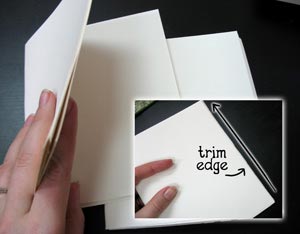
I ripped my paper out of a larger sketchbook where the wire binding had failed. I like recycling.
Start by folding a few in half, creasing the edge with a bone folder or other hard tool. Add pages until you have a bundle of about 9-10 pages (about 20 pages folded in half). I made two bundles. You don’t want to make your paper packets too thick or your sewing machine will have a tough time with it.
You’ll find that after lots of folding the edges of your paper packet will get some uneven edges. Use a scissors or a paper cutter to even up the side.
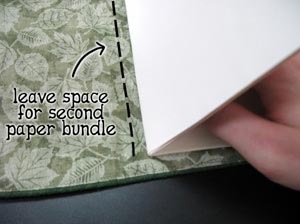
Depending on the size of your sketchbook, you may have more than two paper packets to sew. Find the middle of your cover (where there should be a gap in the interfacing) and place the seam of the papers inside the gap. Leave a little room next to the paper for the second paper bundle.
Depending on how many paper sections you want to add, you’ll have to adjust the placement to leave room for everything.
Once you find the right placement, you might want to tape the pages in place so they don’t shift.
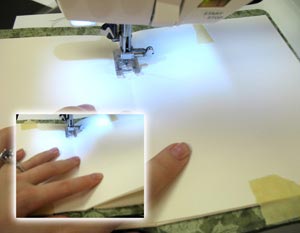
Place everything under your sewing machine, and sew a seam down the crease of your paper. I’d double back on the seam at the beginning and end to make sure the pages are secure.
Once your first section is in place, carefully line up the second section, tape the pages in place, and sew that one in too. Repeat for any paper sections you want to add to your sketchbook.
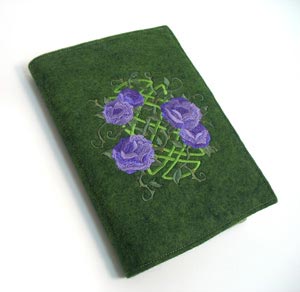
Your sketchbook is ready! Some fabric, interfacing, and nice paper make a very cool unique sketchbook with some awesome personalized embroidery. Pick whatever design is personal to you!
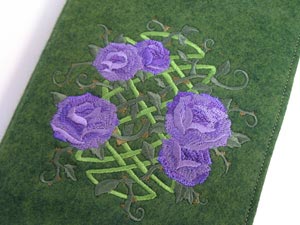
I have that cool design on there cause I’m Irish. Or I like roses. Or, maybe just cause it’s pretty. It doesn’t really matter, it’s my sketchbook.
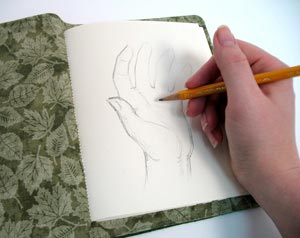
Open it up and sketch you masterpieces! Or a 5 minute sketch of what was supposed to be your left hand but looks a bit more like a monster claw with sausage fingers.
Meh.

If you find your book isn’t staying shut like it should, don’t worry, it’s just ‘cause the pages haven’t settled yet. Put something heavy on your book for a few hours and it’ll be right as rain. The double sided interfacing gives it just enough structure to work as a nice cover, but the flexible fabric side makes it the perfect binding. And you made it all with your sewing machine! These are perfect quick gifts for that artsy person in your life, or great to make when you run out of sketchbooks but have lots of leftover fabric! Let your crafty creativity show in all that you do, even when you’re just sketching. You’re such a hardcore artist, you MADE your own sketchbook. That’s crafty.

